The Clumber is a spaniel family member – and as such has and displays many of the qualities of that ‘race’. These spaniel qualities include:
– a reasonable sized head compared to the body (compare the wolf’s head to its body), wider in the muzzle and skull than the ‘generic dog’ or wolf type, large (soft expression) eyes, dropped ears, broad and large nostrils/nose, and close or short head hair
– the spaniel tends to be shorter in height (less tall) then the average wild dog or wolf, and the legs appear stockier or more bulked up, mainly due to the wider bone, so he also has larger and rounder feet than the average or generic dog
– the spaniel has a silken coat – soft and cold to touch, but one that any mud will fall off when dried, however, some vegetable matter or types of twigs can catch and not fall free naturally
– the coat (like MOST dogs) sheds twice a year, with the main moult of both coat layers in the early summer, but there is also a lesser moult towards the equinox
– still traditionally docked in a few countries, generally around the world now, they are bred and left with their natural tails which can grow a sweeping fringe or ‘feathering’
– a soft and kindly and very loving disposition
The features, in particular, that distinguishes the Clumber from other spaniels are:
– the white coat
– the extra slip and shine to the healthy coat that truly accentuates and enhances the self cleaning mud mode of the spaniel
– the heavier boning and bulk in the leg and body – these are features that ensure this breed is robust enough to withstand working in heavy undergrowth; most other field spaniels spend the majority of their time hunting and flushing in much lighter vegetation typical of crops, small hedgerows, and lightly planted copses
– the broader and shorter ear, found only also on the Welsh Springer, these ears are generally kept cleaner when the dog is hunting with its nose and grow less feathering/hair
– the non-exaggerated coat length; unlike the other gundog spaniels, the Clumber requires very little trimming to keep it in the classical show fashion. English Springers, Welsh Springers, and Cockers all require extensive and regular grooming/stripping to keep their show coat picture. The other breeds, the Irish Water, the Field, and Sussex don’t need as much, but are less spectacular looking individuals, except to breed devotees!
– the Clumber (being an old style spaniel and not greatly evolved in modern times to produce a glamour show dog) also retains much of his historical team spirit – they are dogs that have evolved as ‘pack’ or kennel or team dogs, whereas the Springers, Fields, Sussex, Irish Waters, in particular were developed as single or paired dogs for a single handler or gamekeeper; the Clumber was kept, bred, developed, and evolved, as a team dog – they revel in dog company and human interaction.
– consequently, the Clumber in general is less exuberant than the bonny Springer or gushing Cocker, but still revels in free exercise and interacting with his owner and his family

Clumber – easy to maintain this level of grooming
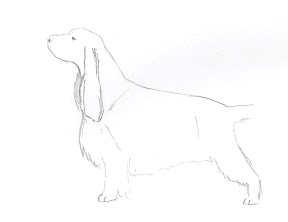
Cocker – extensive grooming required to maintain this look
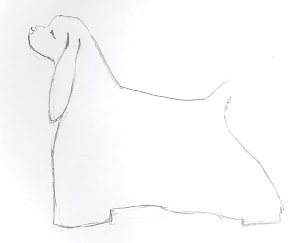
American Cocker probably the hardest to maintain at this appearance
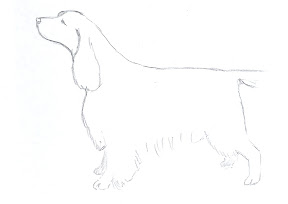
English Springer- the modern dog requires lots of trimming to maintain this look
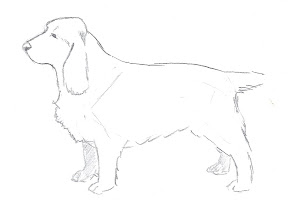
Field easy to main this appearance with grooming
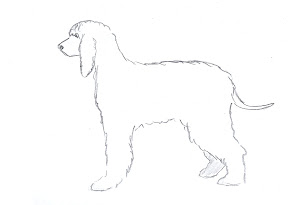
Possibly the easiest, but most unusual, to maintain like this show specimen

Sussex, like the Clumber, easy enough to maintain with the show look
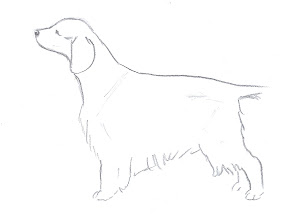
Welsh Springer, surprisingly amoutn of grooming and trimming required to maintain this show look
diagrams copyright © Jan Irving
There are many claims of purebreed dogs being riddled with inherited diseases, if you want to compare the Clumber to other breeds, check out this American review by Dr Jean Dodds http://www.hsvma.org/assets/pdfs/guide-to-congenital-and-heritable-disorders.pdf . Clumbers do have inherited diseases, but not nearly as many as several other breeds, and by the way that list is not complete. I might add, as a breeder, IF the scientists could provide me with a test for these inherited diseases I would be the first to follow that protocol, at this stage we have no such tool and there seems to be little or no research in these fields.
